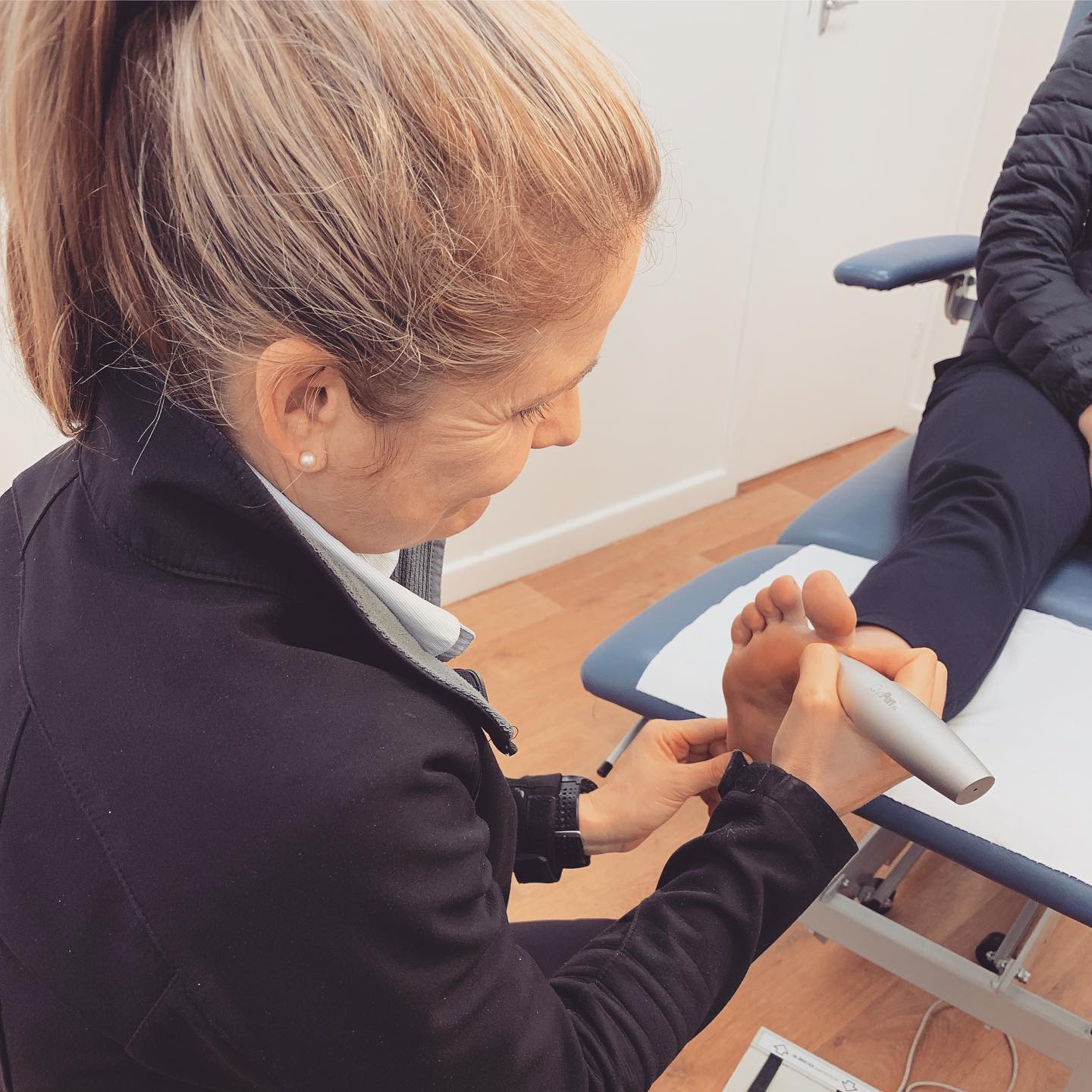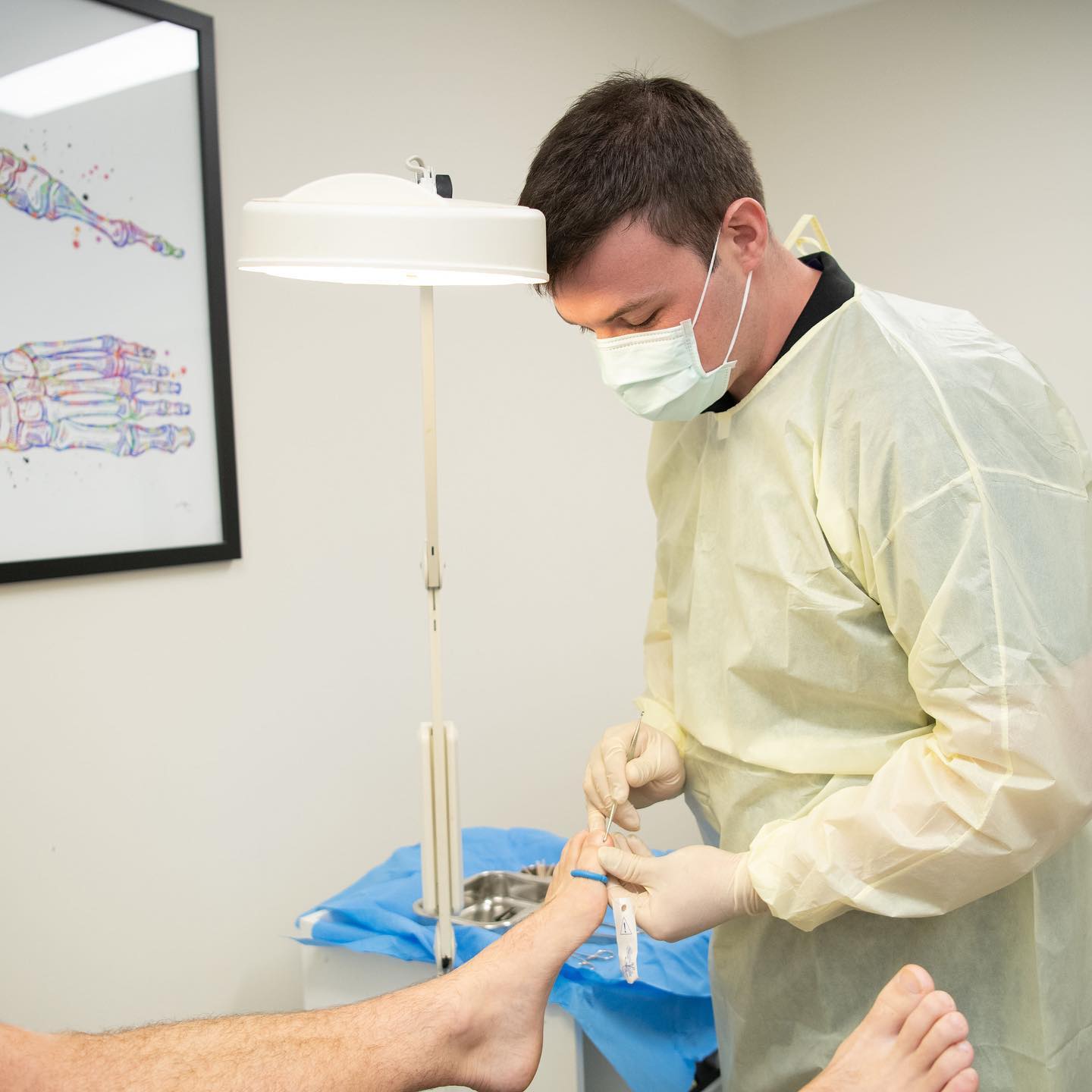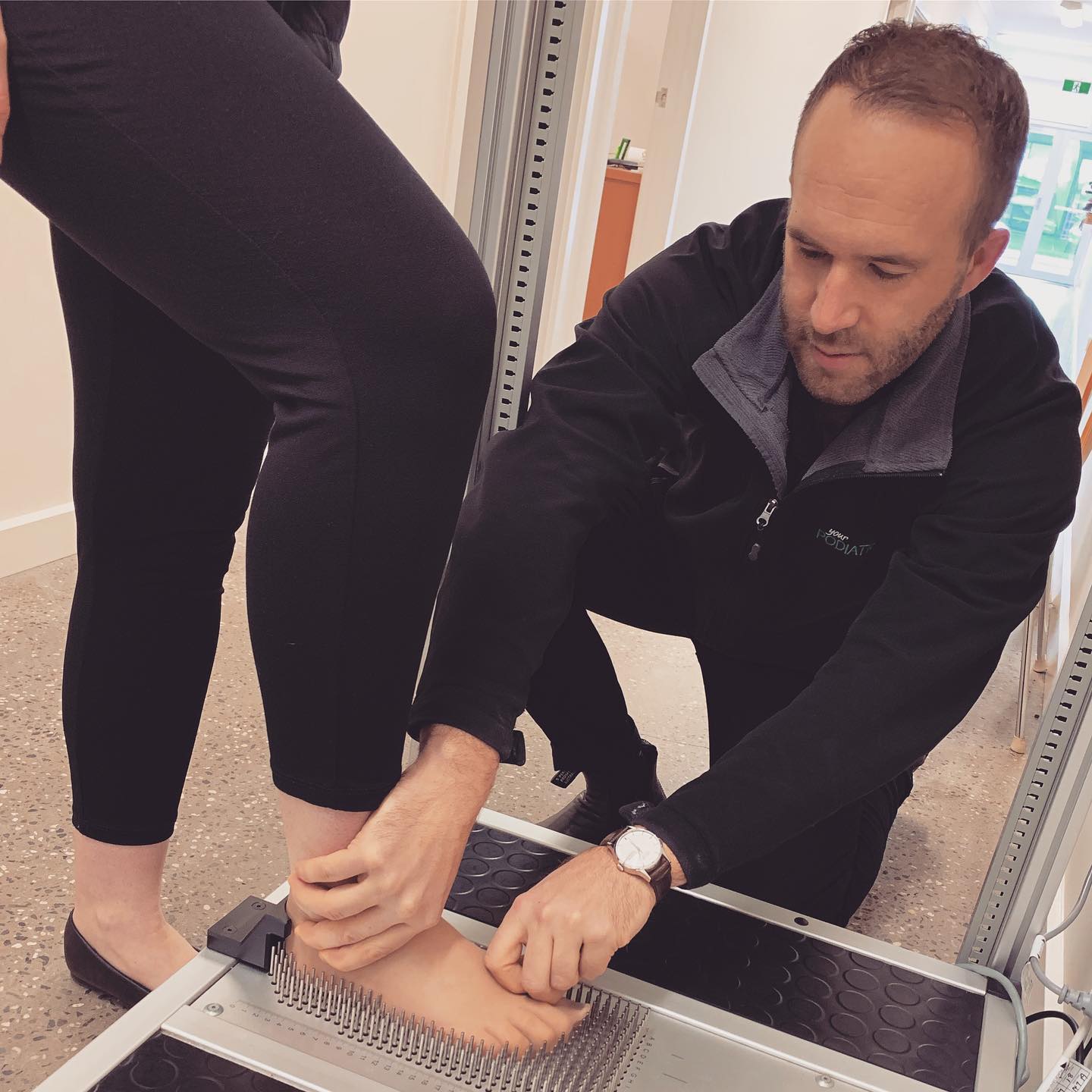Step into Healthy Feet: A Complete Guide to Finding a Pediatric Podiatrist Near Me
Your child’s first steps are more than just a milestone; they’re the beginning of a lifetime of adventures. But what if those tiny feet encounter obstacles along the way? Pediatric podiatry, the branch of medicine dedicated to children’s foot care, plays a vital role in ensuring children grow and develop without impediment.
This detailed guide will walk you through the essentials of finding the right pediatric podiatrist near me for your family, from understanding what podiatry entails to navigating the first visit and beyond. It’s a comprehensive roadmap designed to empower parents in safeguarding one of their child’s most precious assets – their feet.
Understanding Pediatric Podiatry
Pediatric podiatry specializes in diagnosing, treating, and preventing foot and lower limb conditions in children, from newborns to teenagers. This field is critical because children’s feet are not merely smaller versions of adult feet but are complex structures that grow and change rapidly. During these formative years, addressing abnormalities early on can prevent them from developing into more serious issues later in life.
A pediatric podiatrist understands the unique challenges and conditions that can affect a child’s feet, such as flat feet, in-toeing, or sports injuries. They also play a crucial role in spotting less obvious growth patterns that could signify underlying health issues. By ensuring a healthy foundation, pediatric podiatry not only facilitates comfortable and proper walking patterns but also contributes significantly to overall physical health and well-being. In essence, pediatric podiatry is not just about treating foot problems—it’s about giving children the best start on their path to a healthy, active lifestyle.

Pediatric Podiatrist Near Me
Signs that Your Child May Need a Pediatric Podiatrist
Identifying when to seek the expertise of a pediatric podiatrist ensures your child receives timely care to address any foot or lower limb concerns. Here are common signs indicating it might be time to consult a professional:
- Persistent Pain or Discomfort: If your child frequently complains about pain in their feet, ankles, or lower legs that doesn’t improve with rest, it may indicate a problem that requires specialist attention.
- Abnormal Walking Patterns: Pay close attention to how your child walks. Issues such as in-toeing, out-toeing, limping, or toe walking are potential red flags.
- Difficulty with Activities: A noticeable reluctance or difficulty in running, jumping, or participating in similar physical activities might be rooted in foot or ankle discomfort.
- Flat Feet: While it’s common for young children to have flat feet, an absence of arch development by the age of five or older should be evaluated.
- Injuries: Repetitive injuries or slow-healing foot injuries merit a podiatrist’s assessment to rule out underlying issues.
- Skin and Nail Problems: Conditions like ingrown toenails, plantar warts, or frequent blisters can require podiatric care to prevent infection and improve comfort.
- Growth Abnormalities: Any signs of abnormal growth, such as one foot growing larger than the other or unusual swelling, should be checked by a podiatrist.
These indicators serve as a guide. Even in the absence of the above signs, but with any concern about your child’s foot health or development, consulting a pediatric podiatrist can provide peace of mind and ensure their continued growth and mobility.
Finding a Pediatric Podiatrist Near You
Finding the right pediatric podiatrist requires a combination of research, referrals, and considering your child’s specific needs. Here are actionable steps to help you in your search:
- Ask for Recommendations: Start by speaking to your pediatrician, who can often recommend specialist podiatrists experienced in pediatric care. Additionally, reaching out to other parents in your community or support groups can provide valuable insights from those who have navigated similar paths.
- Insurance Coverage: Check with your insurance provider for a list of pediatric podiatrists within your network. This not only helps narrow down your options but also ensures your visits are covered to avoid unexpected costs.
- Professional Associations: Utilize resources from professional associations such as the American Podiatric Medical Association (APMA) or the American College of Foot and Ankle Pediatrics (ACFAP). These organizations often have searchable directories for certified pediatric podiatrists.
- Research Online: Once you have a list of potential podiatrists, conduct online research to learn more about their credentials, experience, and patient reviews. Look for podiatrists who specialize in pediatric care and have positive feedback from parents.
- Consider Location and Accessibility: Ideally, your pediatric podiatrist should be easily reachable. Consider the office’s location, hours of operation, and whether they offer emergency appointments.
- Schedule a Consultation: Before making your final decision, schedule a consultation with the podiatrist. This visit can give you a sense of their bedside manner, how they interact with your child, and their approach to treatment. It’s also an opportunity to ask questions and address any concerns you may have.
Remember, the right pediatric podiatrist not only has the expertise to provide exceptional care but also creates a comfortable and reassuring environment for both you and your child.
Preparing for the First Visit
Preparing for your child’s first visit to a pediatric podiatrist can make the experience smoother and more productive for both you and your child. Here are some tips to ensure you are well-prepared:

Pediatric Podiatrist Near Me
- Gather Medical Records: Bring along any relevant medical records or documents related to your child’s foot health, including previous diagnoses, treatments, or any specific concerns you have noticed. This information will provide the podiatrist with a comprehensive view of your child’s health history.
- List Symptoms and Questions: Write down any symptoms your child has been experiencing, no matter how minor they may seem. Also, prepare a list of questions or concerns you want to address during the visit. This will help you cover all bases and ensure you don’t forget to mention anything important.
- Ensure Comfort: Make sure your child wears comfortable clothing and easily removable shoes for the visit. If they have a favorite toy or book, bringing it along can help keep them calm and distracted if they feel anxious.
- Explain the Visit: Depending on your child’s age and understanding, explain in simple terms what the visit will entail and why it’s important for their health. Reassure them that the podiatrist is there to help and that you’ll be with them throughout the appointment.
- Be Ready for Observation: The podiatrist may want to observe your child’s walking pattern or how they stand and move. Being prepared for this can help you manage your child’s cooperation during the visit.
- Insurance and Identification: Don’t forget to bring your insurance card, a form of identification, and any necessary referral forms. Having these documents on hand will streamline the administrative process.
Preparing for the first visit with a pediatric podiatrist sets the stage for a successful and informative appointment. It helps in creating a comfortable environment for your child and ensures that the podiatrist has all the necessary information to provide the best possible care.
Common Pediatric Foot Conditions and Treatments
Identifying and treating pediatric foot conditions early can significantly improve a child’s quality of life and prevent future complications. Here are common foot conditions seen in children, along with typical treatments:
- Plantar Warts: These warts appear on the soles of the feet and are caused by a virus. Treatment may include topical solutions, cryotherapy (freezing), or laser treatment.
- Ingrown Toenails: This painful condition occurs when the edge of the toenail grows into the skin. Treatments often involve soaking the foot, lifting the nail, or, in more severe cases, partially removing the nail.
- Flat Feet: Many children have flat feet, but most outgrow it. For those who don’t and experience discomfort, orthotic inserts and physical therapy can provide relief.
- Sever’s Disease: This is a common heel injury related to overuse and is especially seen in children who are active in sports. Rest, ice, anti-inflammatory medications, and sometimes heel lifts or orthotics, are part of the treatment plan.
- Toe Walking: Persistent toe walking beyond the toddler years may require treatment to prevent long-term issues. Interventions might include physical therapy, casting to stretch the muscles, or, rarely, surgery.
- Osgood-Schlatter Disease: This condition affects the knee but can alter walking patterns, indirectly impacting the feet. Treatment focuses on reducing pain and swelling with ice, rest, and over-the-counter pain medication.
Each child and foot condition is unique, and the appropriate treatment will vary. A pediatric podiatrist can provide a personalized plan based on the child’s specific needs and circumstances. Regular check-ups and following the prescribed treatment regimen are crucial in managing and overcoming pediatric foot conditions, ensuring children can lead active, healthy lives.
Maintaining Healthy Feet: Tips and Tricks for Parents
Maintaining healthy feet is essential for children’s overall well-being and development. Here are practical tips and tricks that parents can utilize to help ensure their children’s feet stay healthy:
- Choose Proper Footwear: Select shoes that fit well and provide adequate support. Shoes should have a firm heel counter, a flexible sole, and enough room for the toes to move freely. Avoid hand-me-down shoes as they may not fit properly and can alter the child’s gait.
- Practice Good Hygiene: Teach your child to wash their feet daily with soap and water, and to dry them thoroughly, especially between the toes. This helps prevent fungal infections like athlete’s foot.
- Encourage Barefoot Time: Allowing children to walk barefoot indoors helps strengthen the muscles and ligaments of the feet, improving balance and coordination. However, ensure the walking surface is safe and clean to prevent injuries.
- Monitor Changes: Regularly inspect your child’s feet for any changes or signs of problems, such as redness, swelling, or unusual calluses. Early detection can prevent minor issues from becoming more serious.
- Promote Physical Activity: Encourage your child to participate in a variety of physical activities. This not only promotes overall health but also aids in the proper development of foot muscles and structures.
- Stay Hydrated and Maintain a Healthy Diet: Proper hydration and nutrition support healthy skin and nails, and aid in the prevention of conditions like ingrown toenails.
- Limit Screen Time: Encouraging more active play and less sedentary behavior can prevent issues related to overweight and obesity, which put extra stress on the feet.
- Schedule Regular Pediatric Podiatrist Visits: Regular check-ups with a pediatric podiatrist can help track your child’s foot development, catch any abnormalities early, and provide peace of mind.
Following these tips can help parents create a solid foundation for their child’s foot health, enabling them to lead an active and happy life.

Pediatric Podiatrist Near Me
Questions to Ask Your Pediatric Podiatrist
Ensuring your child receives the best possible care involves being actively engaged during medical appointments. Here are some crucial questions to consider asking your pediatric podiatrist:
- What is the Diagnosis?: Understanding the specific nature of your child’s foot condition is fundamental. Ask for a clear explanation of the diagnosis and any related terms.
- What Are the Treatment Options?: Inquire about all available treatment methods, including the most conservative to the more invasive options, and the pros and cons of each.
- What Should We Expect from the Treatment?: It’s important to have realistic expectations about the treatment outcomes. Ask about the timeline for improvement and any potential complications.
- How Can We Support Treatment at Home?: Learn about any home remedies, exercises, or lifestyle modifications that can aid in your child’s recovery.
- Are There Any Activities My Child Should Avoid?: Certain conditions may require your child to limit specific physical activities. Verify what is safe and what could potentially exacerbate the condition.
- When Should We Schedule a Follow-Up Appointment?: Ongoing care may be necessary, so it’s vital to know when to return for a check-up to monitor your child’s progress.
By asking these questions, parents can gain a comprehensive understanding of their child’s condition, the expected course of treatment, and how best to support their child’s health and wellbeing.
In conclusion, pediatric foot conditions are common and can affect a child’s overall health and development. It is crucial for parents to be aware of the various foot conditions that can occur in children, as well as the signs and symptoms to look out for. Seeking timely treatment from a qualified pediatric podiatrist is essential in managing these conditions effectively. Along with proper treatment, following the tips and advice provided can help parents maintain their child’s healthy feet and promote an active, happy lifestyle. Remember to stay informed, ask questions, and prioritize your child’s foot health for a healthier future.
Flagstaff Foot Doctors: Anthony Rosales DPM
https://www.google.com/maps?cid=8835841318590452161
421 N Humphreys St, Flagstaff, AZ 86001, United States
(928) 774-4825
https://flagstafffootandankle.com/
